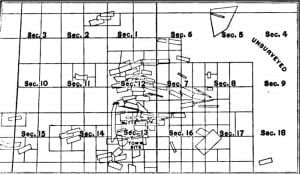The Growth Of Quartz Mining Discoveries
Prospecting early indicated that the future mineral wealth of Idaho would depend upon quartz mining, and accordingly efforts were early made to develop that feature of Idaho’s principal industry. In the autumn of 1863 it was found that thirty-three claims of gold and silver quartz-mines had been made on the south Boise alone, ail of which promised well. The Ida Elmore, near the head of Bear creek, the first and most famous of the south Boise quartz mines in that year, was discovered in June. In an arastra it yielded two hundred and seventy dollars to the ton of rock; … Read more

